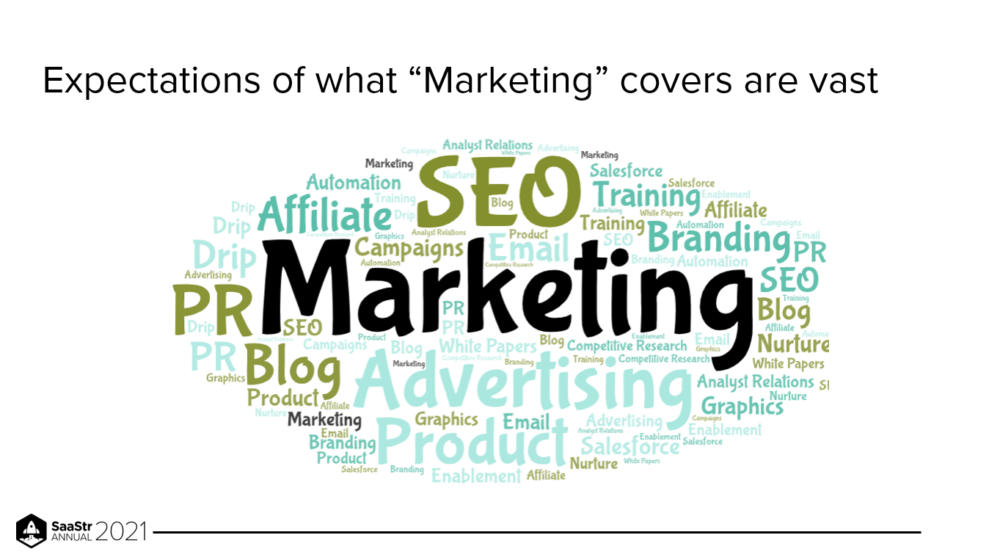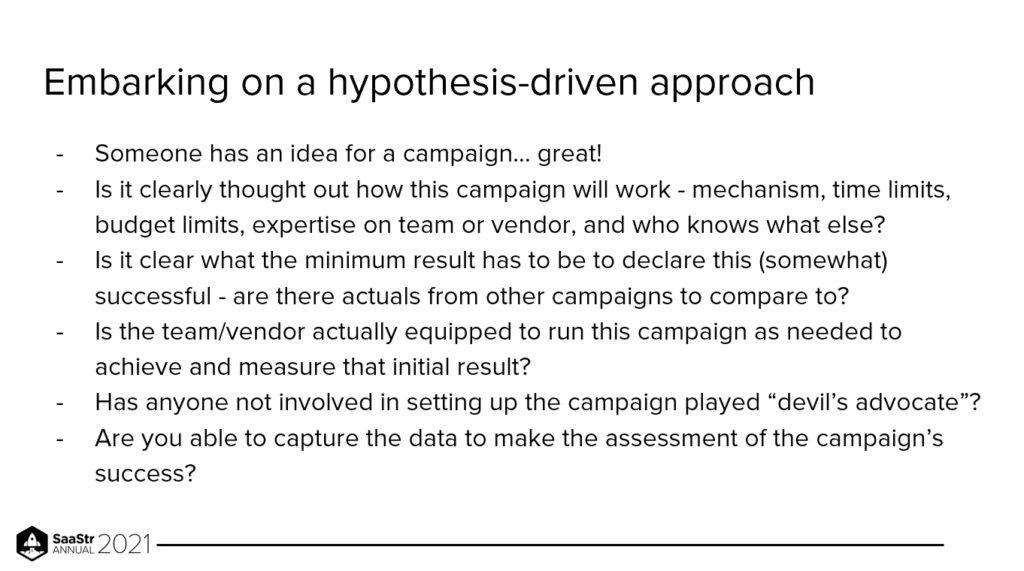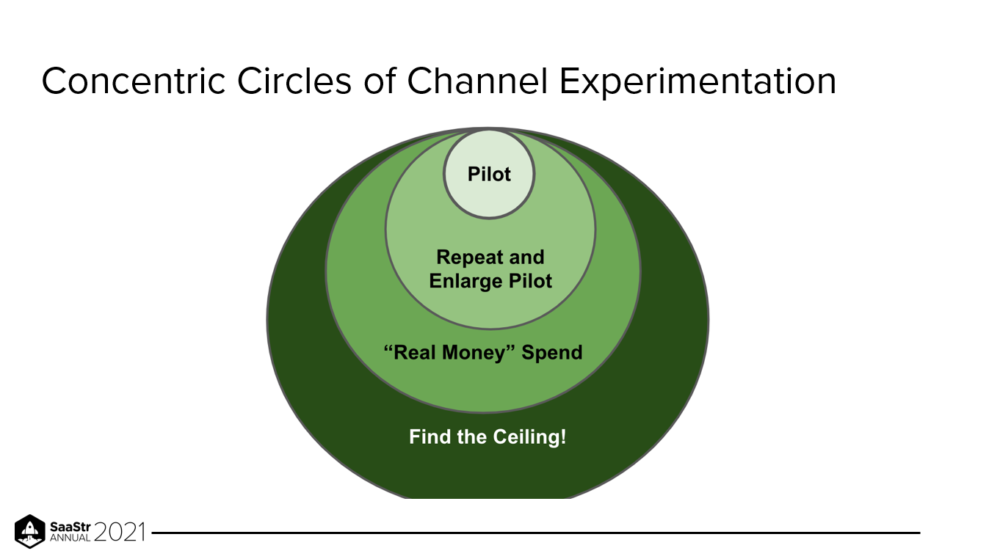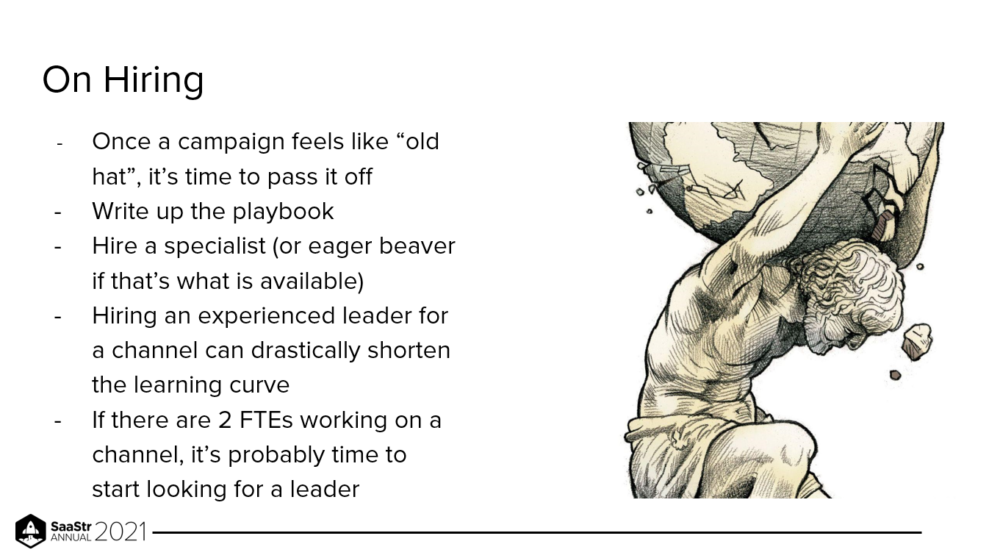One of our most popular SaaStr speakers was Datadog’s CMO Alex Rosemblat. We’re bringing him back to 2023 SaaStr Annual.com for a fresh, deep dive on the state of SaaS and B2D marketing and more!
“More Deals with Less Budget? How to Enable Your Sellers for Maximum Conversion Rates with Datadog’s CMO”
Ahead of that, we wanted to take a look back at his great last session:
———————–
Marketers face daunting expectations from all sides –– it’s easy to get spread too thin and never entirely dominate any single marketing channel. So what’s the remedy to this dilemma?
Datadog CMO Alex Rosemblat shares his hard-won secret after eight years of leading his company’s marketing: Slow and steady wins the marketing channel race.
Read on to learn Rosemblat’s pacing and methodology for achieving your most critical marketing goals, one channel at a time.
Build Your Marketing Channel Like You Build a Product
When you consider how your product team operates, it takes a series of iterations, cycles, and feedback. That is how you should think about a marketing channel. The main difference will be the feedback loop. Whereas a product team will get input from peers, management, and a small group of customers, marketing channels need feedback from random people who may someday become prospects.
Because this is the case, it can take much longer to get the responses to your marketing channel, and the main thing you’re looking for is whether your leads are converting, clicking, or completing desired actions based on your campaign efforts. As Rosemblat says, “You need tons of cycles. And the tweaks you will make to get everything right to build a marketing channel –– like a product –– [will get you] to the point where you can scale it out and hit a ceiling.”
If you take your time and remain introspective about your progress, you will move toward a winning strategy that grows your channel to its maximum.

Want more? Enter your email below for the latest SaaStr updates
Narrow Your Focus and Set Your Goals Realistically
An individual or team can only truly work in a fully dedicated fashion to one thing at a time. So if your team is bombarded with too many demands, it dilutes effectiveness. Therefore, to master a marketing channel, work on one at a time. Here’s what that looks like in simple terms:
- Choose one marketing channel.
- Choose one campaign or campaign type within that channel.
- Then, allow the campaign to meet its goals.
You do this until certain criteria (that you will determine based on your business needs) are met.

Set Expectations With Management and the Board
Your company, especially management, will expect many different things concurrently from the marketing team. Therefore, you will need to determine what you will be working on and then set that expectation with the relevant stakeholders.
First, assess the channel you will dedicate your resources to for the time being and explicitly declare what you will not be doing. You want to emphasize quality over quantity at first. As Rosemblat elaborates, “You want to hit that quality level and that vein of exactly the kind of people that you want to reach out to before you start plowing time, money, and effort into scaling a channel.”
Once you’ve decided that, you need to declare to management that your scope is limited. To help your case, share hard data and goals to explain your stance. Relating your goals to the central business objective will go a long way.

Data Collection and the Hypothesis-Driven Approach
Data collection should always remain your guiding light as you build your channel. Good quality data will be your currency as you navigate campaigns and channel mastery. However, note that marketing data can be imprecise, but it will ultimately prove to be directionally correct. So be sure that you trust your data and collect the right kind to help your case.
If your data collection goes well, you will want to begin some campaigns to build your channel. Keep a scientific approach to ensure you are putting your best foot forward. Here are the right questions to ask about future campaigns for channel building:
- How will the campaign work? How clearly has this been thought out? (Think mechanism, time limits, budget, expertise available, etc.)
- Is it clear what the minimal result needs to be to declare the campaign successful? Are there actuals from other campaigns to compare?
- Is the team/vendor equipped to run this campaign as needed to achieve and measure the initial result?
- Has anyone not involved in the campaign played devil’s advocate and asked the tough questions?
- Are you able to capture the data to assess the campaign’s success?

If the campaign passes this examination, it’s time to try it out. This is where the concentric circles of channel experimentation come into play. You begin with the smallest inner circle, The Pilot. If that goes well, you move to the next circle, the Repeat and Enlarge Pilot. This step is necessary to ensure success is repeatable, scalable, and dependable.
The next phase is “Real Money” Spend. This is where after you’ve proven a campaign’s efficacy, you begin to devote lots of money, time, or resources to it. Then, finally, you arrive at The Ceiling, the final concentric circle.
The Pilot ––> Repeat & Enlarge Pilot ––> Real Money Spend ––> The Ceiling.
Rosemblat remarks, “When the campaign is going great, you’ll want to start to find the ceiling. If you’ve already proven everything out, you understand the dynamics of the campaign, and the campaign has become predictable and repeatable, don’t be afraid to go big.”
Double down on the efforts that work for you, and keep going until to reach the apex. Then you are ready to pass on that successful campaign to a new hire or someone familiar with it on your team and start from the beginning with a new channel.
Key Takeaways (How to Maintain a Scaled Channel)
- Remember, there is always room for improvement, so never stop iterating.
- Once a campaign feels like “old hat,” it’s time to pass it off. Write up the playbook, and hire an experienced leader to maintain the channel.
- Campaigns will have to be taken apart, retooled, and put back together at specific inflection points in scale. Stay vigilant and flexible.

